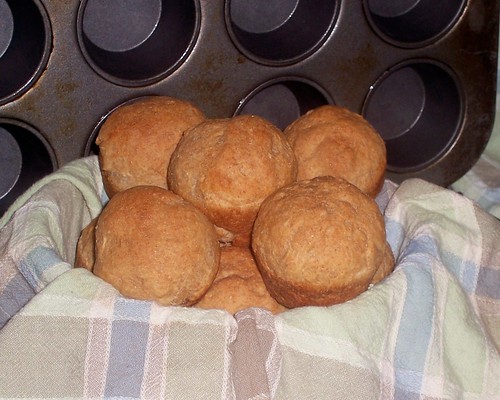Baking -- or more specifically, kneading -- is also, like digging holes in the ground, a fine way to vent frustrations. One may not be able to defenestrate diffcult colleagues, or throttle somnascensist2 mates, but one can knead the daylights out of dough.
At this point it should be well established that I am a variety of things, all of which add up to 'nerd,' and therefore no one should be surprised that I sometimes flip through back issues of 19th-century magazines. These things being accepted, it then follows that items like this recipe:
from Godey's Lady's Book in June, 1878, are flames to my fluttering mothlike brain.
Now, the name given to the recipe jangled something in the back of my mind, but not hard enough for me to go off hunting for it. This was probably just as well, as I'd have gotten tangled up in the many recipes for Parker House rolls and the equally many discussions of just how to shape them. The short form is that the Parker House is a Boston hotel, established in 1850, and the rolls are a signature product of its kitchen.
Given the number of recipes, and lack of similarity between them, the shape of the roll seems to be more important than the dough. But the Godey's recipe is rather vague on the subject of shaping, possibly because it was assumed you'd know. The curious may wish to visit the web site for the Parker House -- now part of the Omni chain -- which offers a pdf download of what might be considered the 'official recipe' and a useful summation of shaping techniques from ochef.com.
A coupla' things before we start:
I tend to replace 1/3 to 1/2 the flour in any recipe with whole wheat flour, because I spend about 9 hours a day sitting on my backside under fluorescent lights, and I need all the help I can get. You can do this with just all-purpose flour if you prefer.
I did not bother to boil the milk and cool it before making the dough; in 1878, there were neither commercial pasteurisation machines nor compulsory pasteurisation laws, but in 2009, the milk I buy has been cooked once already. Since the milk is supposed to be cold when it goes into the recipe, there's no reason to pasteurise it again.
2 cups all-purpose flour
1.5 cups whole wheat flour
1/4 cup sugar
1 tbs butter
1 cup milk
1 tsp active dry yeast dissolved in 1/4 cup warm water
Combine the flours and sugar in a large bowl, and rub in the butter. Make a well in the flour mixture, add the yeast and milk, and mix gently to form a dough. Knead a few times in the bowl, then cover and leave to rise 12 hours. My kitchen was cool this weekend, so the rising was slow, but should your kitchen be warm, consider putting the dough in the refrigerator overnight.
In the morning, punch down the dough, turn it out onto a lightly floured surface, and knead until smooth and elastic (or dump it into a stand mixer and use the dough hook, but for frustration-venting that's not nearly as good as kneading it by hand).
Divide the dough into 12 pieces. Shape each piece into a roll, place on a greased baking sheet, cover, and let rise again. Bake in a preheated 350 F oven for about 15 minutes.
Free as I was of notions of how to shape the rolls, I made little round balls and dropped them into a muffin tin to bake. Next time I make these, I'll try making them the traditional Parker House shape.
One last note: I find the best way to divide dough evenly is to do so by weight. I weigh the whole mass of dough and divide it by the number of rolls I want, which gives me the weight of dough I need for each individual roll. Then I pinch off smaller portions of dough and weigh those to ensure that it comes out right.
The rolls are, as the magazine said, very nice. Almost surprisingly nice.

1 A little quick googling suggests that the oldest ovens known to archaeology are from Babylon, and were built 6,000 years ago.
2 A word coined to describe those who are frequently on belay in their dreams, after learned discussion about the nuances of several Latin verbs with a coworker who is at least as big a nerd as I am.

No comments:
Post a Comment